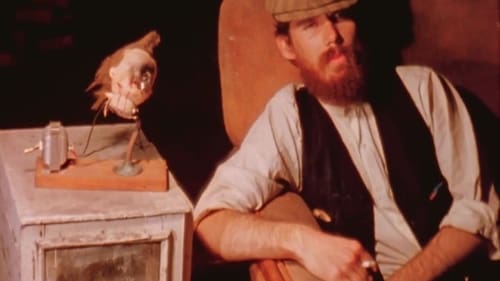
If there is such an old-fashioned thing as "stream of consciousness" in cinema, I suppose this is it. It certainly felt like a flowing stream or river while I was editing day after day, fitting found-sound to found (out-take) footage accumulated over almost sixty years of filmmaking. All the images and sounds buried on reels and spools in the studio came into the light. I felt singularly blessed to be making a non-linear visual autobiography; for it is a fact that most of my life in film is there. The one guiding principle for the construction of the film was the ancient Russian proposal: "instead of canned plays, see a rose, hear a bomb." - Lawrence Jordan

Director
“Aleph” is an artist’s meditation on life, death, mysticism, politics, and pop culture. In an eight-minute loop of film, Wallace Berman uses Hebrew letters to frame a hypnotic, rapid-fire montage that captures the go-go energy of the 1960s. Aleph includes stills of collages created using a Verifax machine, Eastman Kodak’s precursor to the photocopier. These collages depict a hand-held radio that seems to broadcast or receive popular and esoteric icons. Signs, symbols, and diverse mass-media images (e.g., Flash Gordon, John F. Kennedy, Mick Jagger) flow like a deck of tarot cards, infinitely shuffled in order that the viewer may construct his or her own set of personal interpretations. The transistor radio, the most ubiquitous portable form of mass communication in the 1960s, exemplifies the democratic potential of electronic culture and may serve as a metaphor for Jewish mysticism.

This edited Ektachrome home movie with titles documents a 1959 street fair, upper Grant Avenue, San Francisco--the center of Beat culture. The film includes shots of filmmaker Dion Vigne and his wife Loreon, artist and occultist Marjorie Cameron and her daughter Crystal, artist Wallace Berman and his wife Shirley, and Beat poet and surrealist Bob Kaufman.

In describing the basis for TRIPTYCH IN FOUR PARTS, artist Lawrence Jordan writes, "Part one is the Portrait of a North Beach artist, John Reed. Part two and three take place in the desert of the Southwestern United States and Mexico, where I went in quest of, and found, the natural habitat of the peyote cactus. I watched this sacred plant cut and dried for the Indians of the Native American Church. I consumed peyote on numerous occasions. In later years when I red Castineda’s books on the teachings on Don Juan I realized that Mescalito was not a figment of Don Juan’s imagination, and that there is a spirit world whether we like it or not. Part four is a document of the time, and exemplifies the poetry that was in me at that time."



